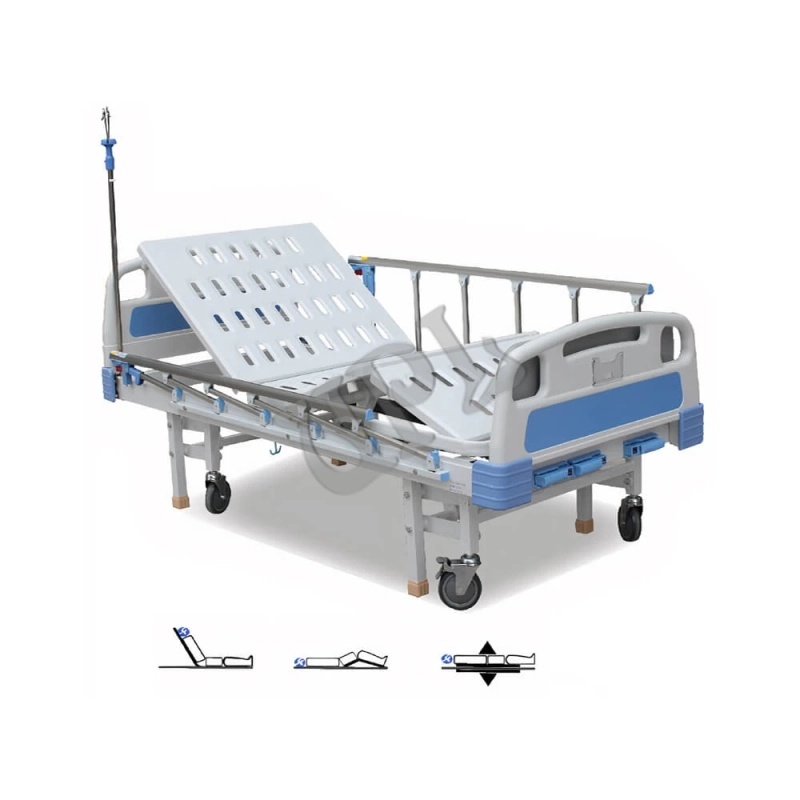In the bustling world of healthcare, the hospital bed stands as a silent sentinel, witnessing countless moments of healing, hope, and human resilience. Yet, how often do we pause to consider the care and maintenance these crucial pieces of equipment require? Let's embark on a journey to uncover the secrets of keeping hospital beds in prime condition, ensuring they continue to serve as reliable havens for patients in their time of need.
A hospital bed is more than just a place for patients to rest. It's a sophisticated piece of medical equipment designed to enhance patient comfort, facilitate care, and even assist in treatment. From adjustable positioning to built-in scales and pressure-relieving mattresses, modern hospital beds are marvels of engineering. But with great sophistication comes great responsibility - in this case, the responsibility of proper maintenance.
Imagine a world where hospital beds frequently malfunction, causing discomfort to patients or hindering the work of healthcare professionals. The consequences could range from minor inconveniences to serious safety issues. Proper maintenance isn't just about keeping equipment functional; it's about ensuring patient safety, improving care outcomes, and maximizing the lifespan of valuable hospital assets.
Every day, hospital beds should undergo a quick but thorough inspection. This daily ritual involves a visual inspection, functional test, cleanliness check, and safety feature verification. This daily check, which takes only a few minutes, can prevent many issues before they escalate into major problems.
While daily cleaning is crucial, hospital beds require regular deep cleaning to maintain hygiene standards and prevent the spread of infections. This process typically involves disassembly, sanitization, drying, and lubrication. The frequency of deep cleaning depends on the bed's usage and hospital policies, but it's typically performed weekly or between patient uses.
Many modern hospital beds are equipped with electrical components. Ensuring their safety and functionality involves regular electrical safety tests, inspection of power cords and plugs for damage, verification of proper grounding, and testing of all electrically operated features. Remember, water and electricity don't mix - extra caution is needed when cleaning electrical components.
A hospital bed is only as good as its mattress. Regular mattress maintenance includes checking for tears, stains, or odors, ensuring proper inflation of air mattresses, rotating or flipping mattresses as recommended by the manufacturer, and verifying the integrity of mattress covers. A well-maintained mattress not only enhances patient comfort but also plays a crucial role in preventing pressure ulcers.
Even the best maintenance procedures are only as effective as the people implementing them. Regular training sessions for staff should cover proper operation of all bed features, basic troubleshooting techniques, correct cleaning and disinfection procedures, and how to report issues or concerns. Empowering staff with knowledge not only improves bed maintenance but also enhances overall patient care.
Even with the best care, hospital beds don't last forever. Knowing when to retire a bed is crucial for maintaining quality of care. Signs that it might be time for a replacement include frequent breakdowns despite regular maintenance, outdated technology that no longer meets current standards, visible wear that compromises patient comfort or safety, and when repair costs consistently outweigh the cost of replacement.
Maintaining hospital beds is more than just a technical task - it's a commitment to patient care and safety. By implementing thorough maintenance routines, we ensure that these silent sentinels of healthcare continue to provide comfort and support to those who need it most.
The next time you encounter a hospital bed, take a moment to appreciate the unseen efforts that go into keeping it in prime condition. After all, in the world of healthcare, even the smallest details can make a significant difference in a patient's journey to recovery.
Alos Read: Rethinking Cleanliness: The Environmental Impact of Wash Bottles in Hospitals


